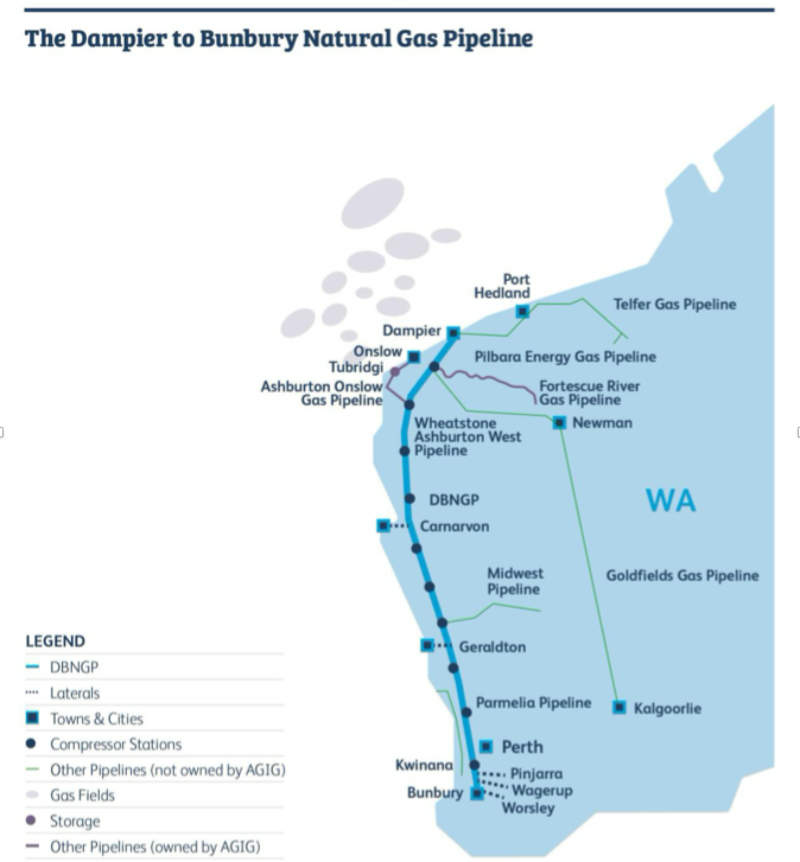WA govt hits the gas with $1.7m hydrogen investment
Energy
Energy
The Western Australia government is getting more serious about hydrogen, pumping $1.68m into seven renewable hydrogen projects to support the development of the fledging industry.
One project will study the potential to leverage the state’s most important piece of domestic energy infrastructure, the 1547km-long Dampier to Bunbury natural gas pipeline.
The 18-month project will determine if hydrogen can be introduced into the pipeline to contribute to the transition by WA’s energy sector to a lower carbon foortprint.
One focus of the study will be the safe blending of small volumes of hydrogen into the pipeline’s mainstream delivery network.
This study received a $216,000 grant from the WA government, while the Australian Gas Infrastructure Group (AGIG) will contribute the remaining $234,000 to the study’s estimated total cost of $450,000.
“AGIG generally supports these projects but we must only proceed in a manner that ensures public safety is maintained, and there is currently no pre-defined method of introducing hydrogen into such large-scale assets as the Dampier to Bunbury link,” AGIG chief executive officer Ben Wilson said.
“Much work has already been completed on studying the compatibility of low-pressure gas distribution networks with blended hydrogen, particularly through AGIG’s current pioneering HyP SA project in Adelaide where first blended gas will be introduced into a local suburb mid this year.
“However, gas transmission pipelines offer greater challenges due to the diversity of gas users and higher operating pressures.”
The pipeline is ideally located to store and transport hydrogen produced in the Pilbara, Gascoyne and Mid-West regions into the commercial and industrial hubs of the greater Perth and Peel regions.
AGIG also intends to develop a roadmap to help develop regulations for hydrogen blended gas in WA.

Meanwhile, Hazer Group (ASX:HZR) received a $250,000 grant for a feasibility study into the creation of a renewable hydrogen transport hub in the City of Mandurah and the wider region.
This study aims to identify and aggregate customers for hydrogen-based low emission transport applications and match these with specific, implementable infrastructure and hydrogen supply solutions.
Other projects that will be funded include examining the potential to use solar hydrogen for waste collection and light vehicle fleets in Cockburn and the potential for an electrolysis hydrogen production plant in the Great Southern or Wheatbelt.
Other proposals include a standalone power system for an indigenous community in the Pilbara, a hydrogen production facility near Kununurra using existing hydropower and the integration of renewable hydrogen with isolated power stations.
“Western Australia needs to explore how we can produce, use and provide energy to our international partners through clean and reliable sources – renewable energy via hydrogen provides a means to do this,” WA regional development minister Alannah MacTiernan said.
“We received 19 feasibility study applications of which seven have been selected: confirming there is strong interest in developing a renewable hydrogen industry in WA.”
The Commonwealth Scientific and Industrial Research Organisation (CSIRO) recently forecast that Australia’s hydrogen industry could be worth up to $11 billion and employ 7,600 people by 2050.
In November, the Tasmanian government said that it was looking to leverage its abundant renewable energy resources to become a world leader in large-scale renewable hydrocarbon production.
It said that a 1,000 megawatt facility capable of supplying 1 million homes could be feasible by 2030.
NOW READ:
Hydrogen could be worth $11bn by 2050, more research needed: CSIRO
Tasmania positions itself for the hydrogen future